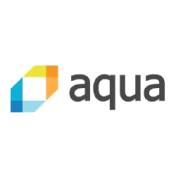Container Technology Wiki
Docker Containers
- Docker 101
- Basic Docker Operations
- Docker Administration
- Docker Security Resources
- Docker OS Interaction
- Docker With Other Tools
- Docker API
- Docker Compose
Kubernetes Guide
- Kubernetes 101
-
Kubernetes Architecture
- Kubernetes Ecosystem
- Kubernetes Nodes
- Kubernetes Pods
- Kubernetes Controllers and Control Plane
- Kubernetes DaemonSets
- Container Runtime Interface
- Working with Containers in Kubernetes
- Working with Images in Kubernetes
- Workloads in Kubernetes
- Kubernetes Services
- Kubernetes Jobs
- Kubernetes and Microservices
- Kubernetes Operators
- Kubernetes Persistent Volumes
- Kubernetes Advantages and Use Cases
-
Kubernetes Operations
- Installing Kubernetes
- Kubernetes Configuration
- Kubernetes Monitoring
- Kubernetes Debugging and Troubleshooting
- Kubernetes Load Balancing
- Kubernetes Security
- Kubernetes Networking
- Kubernetes Storage Management
- Kubernetes in Production
- Working with Kubernetes Ingress
- Kubernetes Security Best Practices
- Managing Kubernetes with Kops and Kubeadm
- Kubernetes Secrets
- Kubernetes Autoscaling
- Kubernetes ConfigMap
- Kubernetes Namespace
- Kubernetes Authentication
- Kubernetes Vault
- CIS Kubernetes Benchmark
- Kubernetes Cluster
- Kubernetes as a Service
- Managed Kubernetes
- Kubernetes Distributions
- Enterprise Kubernetes
Container Basics
- Container Architecture
- Advantages of Containers
- Container Challenges
- Containers and IT Infrastructure
- Enterprise DevOps
- eBPF
- eBPF Linux
Containers Ops
- Container Security Management
- Container Deployment
- Container Monitoring
- Container Automation
- Container Multitenancy
- Container Backup and Disaster Recovery
- Prometheus Monitoring
Container Security
- Container Security Best Practices
- Containers for DevSecOps
- Container Vulnerabilities and Threats
- Container Vulnerability Scanning
- Container Secrets Management
- Container Access Control
- Container Audits and Compliance
- Application Whitelisting
- Zero Trust Networks
- Network Segmentation for Containers
- Container Isolation
- Open Source Security Tools for Containers
- Open Source Vulnerability Scanner
- Open Source Security Tools
- Container Security Tools
Cloud Native Computing Foundation
- AWS EC2 Security
- Cloud-Native Applications
- Cloud-Native Architecture
- Cloud Native AWS
- Cloud Native Development
- Cloud Native Infrastructure
- Cloud Native Security
- Envoy Proxy
- Harbor Kubernetes
- Open Policy Agent
- Oracle Cloud Security
- SaaS Cloud Security
- Security Issues in Cloud Computing
- SPIFFE
- VMware Tanzu
Serverless Computing
- Serverless Architecture
- AWS Lambda
- Azure Functions
- Google Cloud Functions
- Serverless Security
- On-Premises Serverless Platforms
- Function as a Service - FaaS
- Knative
- Serverless vs Containers
Container Platforms
- Containers and Cloud Computing
- Container Operating Systems
- Red Hat Openshift
- Pivotal Container Service
- Multi-Cloud Strategy
- Kubernetes vs Cloud Foundry
- CWPP
Other Container Engines
Kubernetes Alternatives
Container Community and Events
AWS Fargate
AWS Fargate is a technology for Amazon ECS and EKS that allows to run run containers without having to manage servers or clusters. With AWS Fargate, you no longer have to provision, configure, and scale clusters of virtual machines to run containers. This removes the need to choose server types, decide when to scale clusters, or optimize cluster packing. This page gathers resources about the advantages and key features of AWS Fargate.
Below we have compiled publicly available sources from around the world that present views on AWS Fargate.
The Container Security book by Liz Rice
Fundamental Technology Concepts that Protect Containerized Applications
Perspectives on AWS Fargate
Securing Struts in AWS Fargate
AWS Fargate is a container service that allows you to provision containers without having to worry about the VM instances for them to run on. This post will look at how Aqua can protect against unexpected behavior at run-time - thus potentially preventing zero-day exploits too.
Security for Cloud-Native Compute Will Be Different
With increased adoption comes increased scrutiny. We should expect more attention on container- and serverless-specific security concerns, including software image integrity, secrets management, controlled access to orchestration management, and several considerations around runtime protection and monitoring. This 451 Business Impact Report explains the requirements of cloud native security and why organizations should approach it differently.

AWS Fargate Through the Lens of Kubernetes
thenewstack.io

Azure Container Instances vs. AWS Fargate
hackernoon.com

reluscloud.com

skelpo.com
How To

Build a serverless Twitter reader using AWS Fargate
aws.amazon.com

Run tasks with AWS Fargate and Lambda
lobster1234.github.io
Case Studies
Vendor Information

AWS Fargate: A Product Overview
aws.amazon.com
Further Reading
- Amazon Elastic Container Service — Amazon Elastic Container Service (Amazon ECS) is a highly scalable, fast, container management service that makes it easy to run, stop, and manage Docker containers on a cluster. This page gathers resources about how to set up and run container images on Amazon EC2 Container Service.
- AWS Fargate — AWS Fargate is a technology for Amazon ECS and EKS that allows to run containers without having to manage servers or clusters. With AWS Fargate, you no longer have to provision, configure, and scale clusters of virtual machines to run containers. This removes the need to choose server types, decide when to scale clusters, or optimize cluster packing. This page gathers resources about the advantages and key features of AWS Fargate.
- Amazon EKS — Amazon Elastic Container Service for Kubernetes (Amazon EKS) is a managed service that makes it easy for you to run Kubernetes Guide on AWS without needing to install, operate, and maintain your own Kubernetes clusters.
Get updates on container technology












